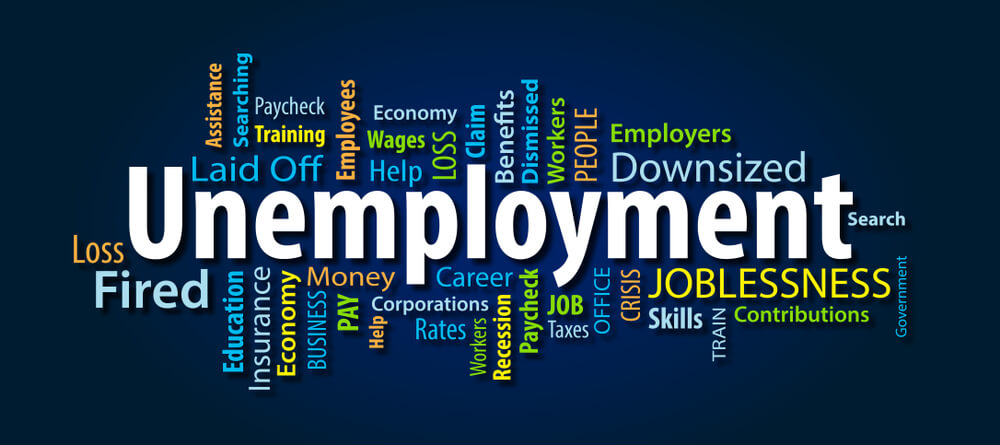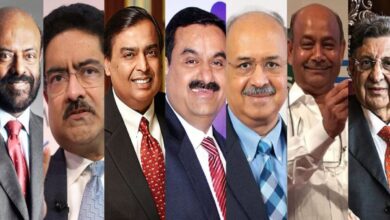The Kamra-Aggarwal Debate; Who Really Creates Wealth In India? Profit At What Cost?
In an instance that reflects what began to define the nation in its use of social media in matters to stir up debates, last year, it was seen the way a public row began between a comedian named Kunal Kamra and Bhavish Aggarwal of Ola Electric went public as it turned into a nation-wide debate within the digital space. It went all the way from several strongly worded tweets made by Kamra to eventually one between upset Ola consumers and its supporters as someone like Aggarwal batted for himself and others like him, and what he represented was something people ought to protect and recognize to be considered the \"new wealth creators" in this country.
A post by Kamra, showing Ola scooters gathering dust outside a dealership, found an echo among many people having similar complaints about their scooters. Customer grievances continued to pour in with poor service, troubling scooters catching fire, and others. Aggarwal was quick to retort with the accusation that Kamra was being paid to disparage his company.
Soon it became a controversy over respect for Indian entrepreneurs, as some labeled the criticism of “wealth creators” unpatriotic. Media personality Smita Prakash also joined the chorus. The backlash was instantaneous. Ola’s stock plummeted by over 8%, and the whole scenario became a rallying point for consumer rights and corporate accountability in India.
Over the past few weeks, there has been a very public row online between comedian Kunal Kamra and Bhavish Aggarwal, the CEO of Ola Electric. The debate started over a simple social media post criticizing Ola Electric’s products. Famous outspoken words of Kamra, a series of pictures and comments questioning the quality of Ola’s electric scooters, created a nationwide debate.
This criticism brought many frustrated customers to voice their problems over service delays, issues with the product, and even scooters catching fire. But it did not end there—the controversy between a consumer’s voice and a corporate leader’s response led to a debate about job creation, nationalism, and the issues of holding large companies accountable in India.
The Social Media Firestorm: Kamra vs. Aggarwal

The battle between Kamra and Aggarwal began on the micro-blogging site X, which was earlier Twitter. Kamra posted a picture of several Ola electric scooters rusting outside a dealership. The picture was to reflect what he claims is the widespread issue of subpar service quality from Ola, where scooters were waiting for their servicing. Kamra’s post was immediately viral, where customers showed broken scooters, delayed servicing, and much more, creating a sorry picture of Ola Electric’s service standards.
Aggarwal did not remain silent. He accused Kamra of being paid to advertise defamatory content against Ola Electric. It was a flip-flop of the controversy, as Kamra challenged Aggarwal to respond to genuine issues faced by common customers. The argument became very personal, and each person began hitting back at the other’s career and credibility. Off the social media platform, the controversy cost Ola dearly, as its stock value went down by over 8%. It reflected the concerns of investors about the public image of the company.
Public Debate: Creators of Wealth vs Consumer Rights
Fundamentally, it seems that the heart of the argument is on two opposite conceptions of thought, paying respects to “wealth creators” against the defense of consumer rights. To others, an attack on corporate monsters running the economy is nothing but an attack on national pride; leaders like Aggarwal are building the future for India, they say, and create jobs for thousands who help the nation grow economically. According to them, every bit of such criticism deflates the entrepreneurial success already achieved.
Companies need to be called accountable, especially when it’s about quality, safety, and transparency. According to Kamra, criticizing the company for its failure — especially when it is talking about a product used daily — is not a form of “anti-nationalism“; it is just a call for basic accountability.
Who are India’s Wealth Creators?
Many who support Aggarwal believe that critical remarks against successful entrepreneurs are a ploy to discourage business growth and innovation in India. “This fellow has created wealth for thousands and jobs for lakhs, and you call him corrupt?” several said in response to Aggarwal’s defense as a “wealth creator” and a “job creator” who helped build the economy. The editor of ANI, Smita Prakash, was part of the debate, too, stating that it is damaging to go after entrepreneurs and brand those critics “Jaichands.”
But this raised a larger question: who are India’s true wealth creators? The large corporate houses are all creating jobs and uplifting the economy, or is this once again hype?
Corporate Responsibility: What Do Consumers Actually Want?
The customer buying the product would expect good quality, safety, and support if problems occurred. For example, complaints regarding Ola Electric are delays in services, malfunctions of scooters, and issues with safety as overheating and, worse still, catching fire in scooters. Daily commuting in such scooters demands reliability.
This case suggests growing Indian consumer behavior: customers expect far more from a company and its product than merely serving the product; they also crave accountability and transparency. When something doesn’t go their way, they raise more voices and protest.
Companies such as Ola Electric have indeed changed landscapes in electric scooters alone. But business growth through customer issues appears less meaningful if there seem to be so many incidents of unsolved issues popping up time and again.
The “Wealth Creator” Argument: What Holds It Back?

However, in defense of Aggarwal, many argued that it is wrong to target entrepreneurs as this would ultimately prove damaging to India’s future. Smita Prakash of ANI suggested targeting “wealth creators” was nothing but a form of treachery, drawing analogies with those who, throughout history, undermined the sovereignty of India.
However, is “wealth creation” alone a valid argument with which to shield businesses against criticism? Ideally, authentic wealth creation should be productive of a large population where employment, economic stability and good quality products are evinced. However the notion of “wealth creators” gets complicated by tales of corporate woes with consumer dissatisfaction and lacklustre jobs generation. This leads to another question: what kinds of wealth creation make a difference?
The Job Creation Myth in India’s Corporates
Indian conglomerates and other large firms regularly portray themselves as the creators of jobs in India, growing the economy and putting people to work. New data is telling a different story. Although companies such as Tata Consultancy Services and Reliance Industries, India’s largest, each employ hundreds of thousands of workers, far more firms produce fewer jobs than one might anticipate based on their margins and the pace of expansion.
Take, for instance, TCS hiring around 600,000 people and Reliance Industries around 400,000. However, Adani Group, another giant, hires only 46,000 worldwide in an arena where revenues have witnessed manifold expansions. Now, data reveals India’s top six corporate houses saw revenue and profit multiplicities by many folds, yet new jobs created within such organisations need to be more active and better in certain lines. It can be seen that the six clusters registered 7.3% in revenue, 22.3% in profit growth, and 43.8% in market capitalization growth in FY 2024. Job generation? That declined by 0.2%.
This gap between the profits of corporate India and its ability to create jobs has been starkly highlighted in a recent report titled “Tata, Reliance, Adani: Corporate India’s top 6 go long on profit, short on jobs.” Data shows that while private corporations are seeing an all-time high in profit, they need to generate more new jobs to meet this. Questions arise over who is actually benefiting from the wealth created by these companies.
Taxation- Who Bears the Cost?
Taxes also come into the picture of discussion. Large companies generate most tax revenue collected by the Indian state and many more champions argue that the greater this is, the more excellent it is for companies to prosper. After all, at the very least, their taxes finance such initiatives and services that taxpayers do not.
That aside, the recent statistics revealed to the public clearly indicated that common Indian tax-payers (i.e., the middle-class of Indian society), for the first time, began pouring in more revenue than big Indian business houses into government revenue pockets. In the fiscal year 2023-24, individual income taxes constituted ₹10.22 lakh crore, while corporate taxes were at ₹9.22 lakh crore. Annual revenue loss because of corporate tax cuts brought in 2019 is estimated at about ₹1.44 lakh crore. Nevertheless, big corporations come under government support either through tax cuts, gains from public resources, or policies in their favor.
This is a trend wherein the tax burden of rises is imposed on the middle class, while corporations get benefit from cuts. The kind of trend would provoke questionability over fairness, particularly if corporations do not give proportional contribution to the tax pool, in line with profits reaped. Public welfare and funds for such an important service could be compromised.
Layoffs, Contract Jobs, and Employment Trends

Another concern in corporate India has been the increasing layoffs and contract job trends. In the past few years, companies indulged largely in switching out of permanent employment and joined forces toward the temporary and contract-based employment. This leads to a job insecurity whereby contract workers do not guarantee to have benefits, stability, and good wages.
In the global IT sector alone, 140,000 people lost jobs this year. These huge companies are restructuring to reduce costs, leaving many of the workers unemployed or sent into uncertain gig or contract roles. Such roles normally have limited protections, and they do not offer any benefits; instead, the job insecurity is exposed to workers. This trend is always justified by companies as responding to the “changing job market,” but it has a real impact on the lives of employees who are not finding permanent, secure employment.
This precarious nature of the job market catches most young professionals in urban areas and subjects them to suffer under high work stress, long hours, and low wages without any hope for future stability. This gig economy does not compensate for lost permanent employment but creates an environment where millions work without any social security and minimum rights at work.
Private Sector Contributions Compared with Public Sector Contributions
Even as private corporations have, over the years, often been known to be champions of job and wealth creators, for decades, the public sector organization has been an important source of employment and necessary services to the country. After all, the Indian Railways employs 1.2 million; the Ministry of Defence more than 2.9 million on its payrolls.
These public sector jobs are not only stable sources of employment but also serve very important functions in society. Indian Railways unifies distant parts of the country, helping to integrate remote communities into the national economy. Public sector banks, like State Bank of India (SBI), provide banking services to millions, supporting economic activities in both rural and urban areas.
Public sector contributions go far beyond employment. Indeed, several public institutions have invested in large private companies, including major corporate giants such as the LIC and public banks. LIC has, for instance, substantial investments in several of Adani’s companies. These are essential contributions that the public sector makes to the economy, without which little is said about economic growth and national development.
Revitalizing Wealth Generation and Well-being
It raises far more fundamental questions relating to wealth creation, contribution to the economy, and consumers’ rights. A word is often linked with big business success in the name of the term wealth creation, but if critically viewed, the reality comes forth that the essence of true wealth creation is related to societal welfare rather than margin.
Jobs, services, and stability come from the public sector of India. The private corporation is mostly celebrated for their capacity to create wealth, and they are less likely to get criticized and ignored. Whether wealth creation is measured through the success of corporate or in how much it benefits citizens is something to be answered.
That the consumer rightly demands good quality products, excellent service, and accountability in the marketplace is a given. If big corporations such as Ola Electric cannot fulfill such expectations, then it is but right for consumers to lodge complaints against them. And if such large companies do not provide sufficient jobs, do not pay sufficient taxes, or do not treat their employees fairly enough, then one should question what they are doing for society.
Who Actually Makes India Prosper?
The spat between Kamra and Aggarwal has brought forth a far more critical issue in the Indian economic landscape- that of corporate profits and the contribution they actually make to society. Of course, private companies are integral to the economy, but the centrality given to them as the only “wealth creators” is overdone.
Public sector institutions, including Indian Railways and SBI, and the employees of thousands of branches and hundreds of railway stations, which are the backbone of India’s growth and well-being, are a necessity for the country. In the meantime, growing temporary jobs, tax cuts for corporations, and uneven job growth in private firms are all challenges to the middle class and aspiring young professionals.
In so many ways, there should be recognition on our part as consumers and citizens that wealth creation isn’t just profit or status. For that matter, only if the economic activities in one way or another lift communities, improve lives, or provide more sustained, stable benefits for the benefit of society would wealth really be created. Such a reflection proves the most valuable in extracting a lesson from this controversy: we should focus not on who accumulates more but on who genuinely makes contributions to our country.




